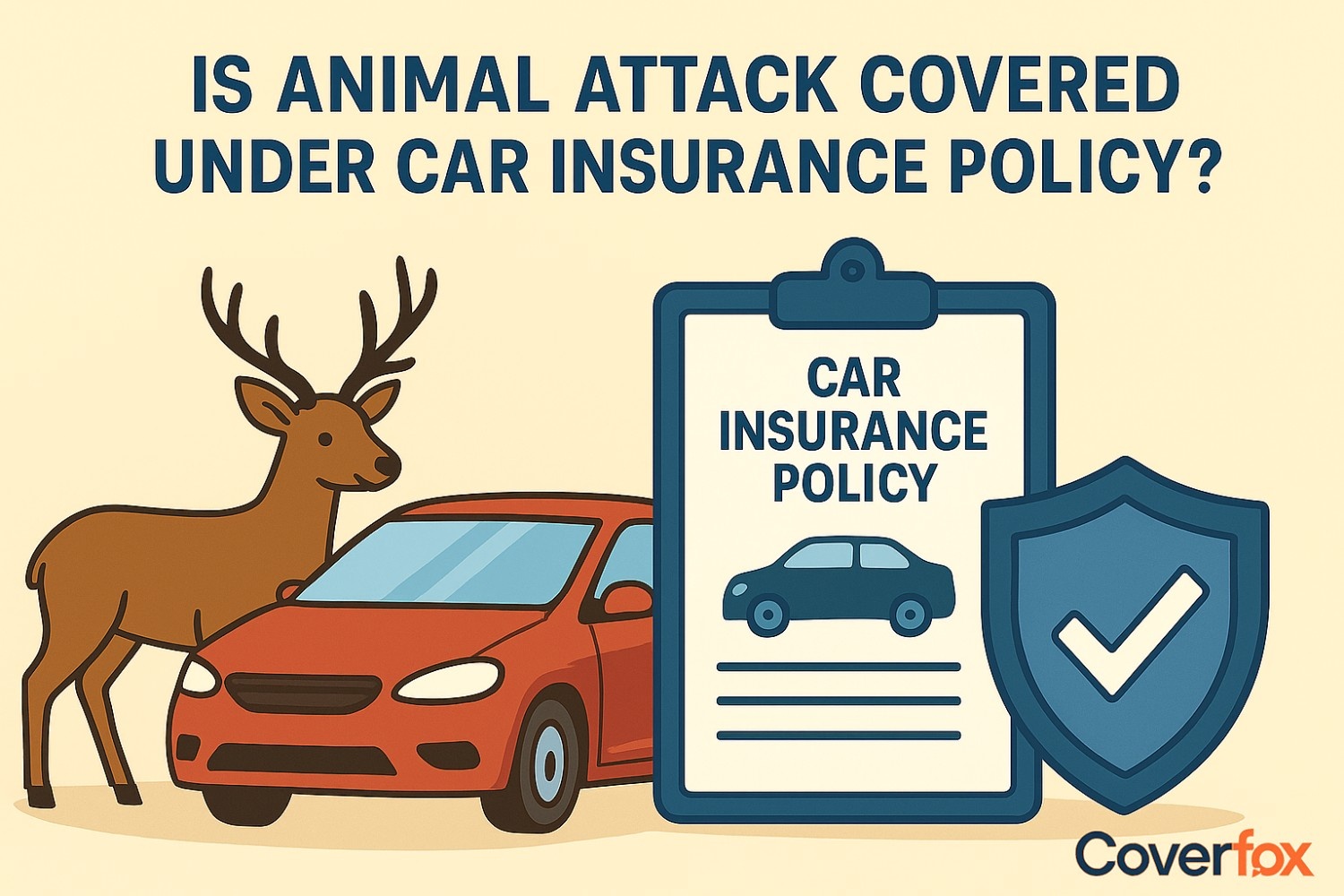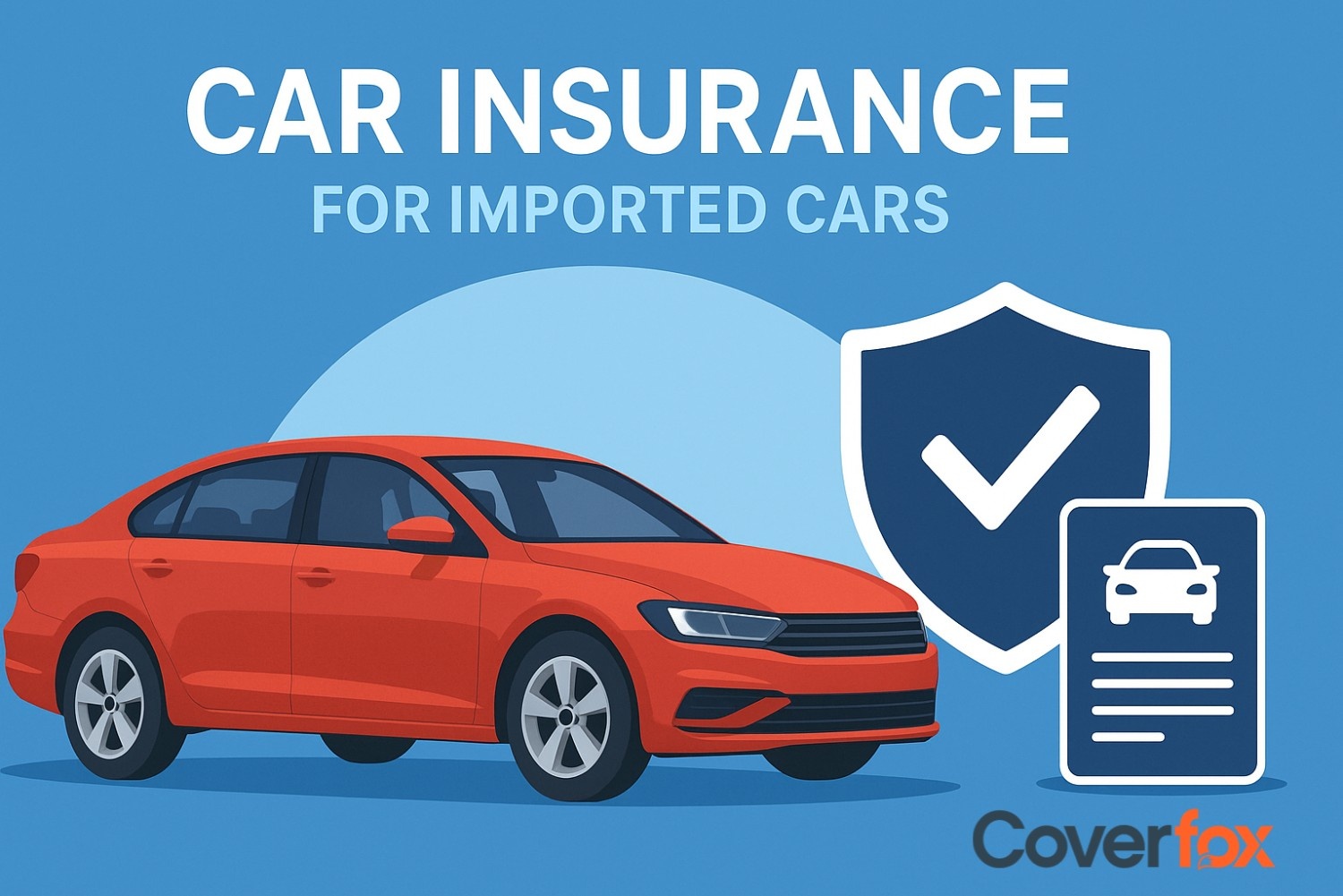Animal attacks on vehicles can lead to costly repairs. Comprehensive car insurance protects against such incidents — from collisions with animals to damage caused by rodents, birds, or pets. These policies cover both internal and external damages, ensuring peace of mind for car owners. Timely reporting, proper documentation, and preventive care are essential to ensure your claim is approved and your car stays protected from unexpected animal encounters.

Imagine you are driving around in your car at a hill station, chilling and enjoying nature, and all of a sudden, a random buffalo comes out of nowhere and hits your car! Or your car is peacefully parked, and when you return to check on your car, you see bite marks on your bumper. That must feel annoying. But, don't worry, if you have comprehensive car insurance, these damages can be covered and you will be made whole! Let us learn more about animal attacks that are covered under car insurance policies through this article.
Common Types of Damages Where Animal Attacks are Covered
Animal attacks on motor vehicles are more common than you think, and animals can very well damage the interiors and exteriors of your car. In such situations, your car insurance policy can help cover the repair costs. Thankfully, most insurers in India include animal-related damages under comprehensive coverage, easing the financial burden of repairs.
Here are some common ways animals can damage your car:
- Stray cattle or deer suddenly crossing the road can cause dents on the bonnet or cracks in the headlights during a collision.
- Cats or stray dogs may climb onto parked cars, leaving scratch marks or damaging the paint surface.
- Squirrels or rats can nest under the bonnet, chewing insulation or gnawing on rubber hoses.
- Monkeys can pull at wipers, mirrors, or roof racks, causing external damage to the vehicle.
Is Animal Attack Covered under your Car Insurance policy?
Fortunately, Yes! Most car insurers in India cover animal attacks under comprehensive car insurance plans. Although there might be exceptions, it is still better to opt for a comprehensive plan for your prized car so that it is protected against any unforeseen damages, unlike a TP insurance, where only third-party liabilities are covered.
How to Claim Car Insurance for Animal Attack Damages?
The first step for filing a car insurance claim for animal attack damage is to inform the insurer. Once that is done, document and take a photograph of the damage caused by the animal attack as evidence. Then, follow the normal procedure for filing a claim – fill the claims form, get your car repaired at a cashless garage or get reimbursed by providing the bill for the damages. Make sure you attach the photographs and documentation along with the form to ensure a smoother claim process for animal attack damages.
Preventing Animal Attack Car Accidents
Although animal attacks are covered under car insurance policies, to is better to be safe than to go ahead and file for a claim. Here are a few effective ways to avoid animal-related damage or accidents:
- Stay alert and reduce speed while driving through forested or rural areas.
- Use high beams cautiously at night to spot animals crossing the road early.
- Avoid leaving food scraps inside or near your car to prevent attracting animals.
- Park in enclosed or well-lit areas to deter stray animals and rodents.
- Regularly inspect the engine bay and wiring for signs of rodent activity.
- Use rodent repellents, ultrasonic devices, or protective mesh around cables and wires.
Examples of Animal Attack Scenarios Covered
Car insurance typically covers several animal-related incidents, provided you report them promptly and avoid negligence. Delayed reporting or failure to maintain your vehicle properly can lead to claim rejection by the insurer.
- A wild boar or deer hitting your car on a hilly road, causing front-end damage.
- Cows or buffaloes rubbing against parked cars, leading to dents or paint scratches.
- Rats nesting near the air filter or fuse box, damaging internal components.
- Stray dogs biting or tearing the car’s rubber bumpers or mud flaps.
- Birds pecking at rubber window seals or nesting inside the engine bay.
- Monkeys jumping on the roof or bonnet, causing dents and scratches.
- Snakes crawling into the undercarriage or vents, leading to potential safety risks.
- Goats or sheep climbing on parked cars, damaging mirrors or antennas.
NOTE: Refer to your car insurance policy document for exact coverage, these are general examples and may not be included in certain policies.
Key Takeaways
Animal attacks on cars are more common than many drivers realise, especially in rural or forested regions. Such incidents can cause anything from minor scratches to severe mechanical damage. Having a comprehensive car insurance policy ensures financial protection against these unexpected events, covering repair or replacement costs. However, regular maintenance, safe parking, and timely claim reporting are equally important to avoid claim rejection and keep your vehicle safe from unwanted animal interference.
Explore More Articles:
Does Your Car Insurance Cover Damages By Rat Attack?
Risks Covered By The Comprehensive Car Insurance
Importance & Benefits of a Comprehensive Car Insurance
Frequently Asked Questions
Does car insurance cover damage caused by animals?
Yes, a comprehensive car insurance policy covers damages caused by animals, including collisions, bites, or internal component damage.
Are scratches or dents from stray animals covered?
Yes, if you have a comprehensive policy, damages such as dents, scratches, or broken parts caused by stray animals are generally covered.
Do I need to file an FIR for claiming animal-related damages?
An FIR is not always required, but insurers may ask for photos or a workshop inspection report as proof, especially in major damage cases.
Will my premium increase if I claim animal damage?
Yes, raising a claim may affect your No Claim Bonus (NCB) and could slightly increase your premium during renewal.
How can I prevent animal-related car damage?
Park in enclosed or well-lit areas, avoid leaving food in or around the car, and use repellents or mesh guards to keep rodents away.
What proof is needed to support a claim for animal damage?
You’ll need photographs of the damage, a repair estimate, and in some cases, a garage or surveyor report to validate your claim.





